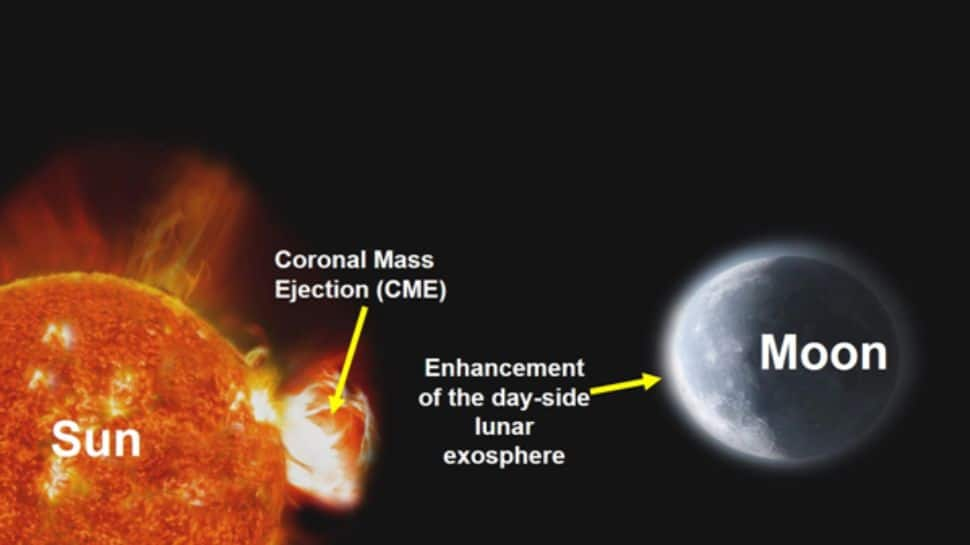Certainly! Here’s a clear, comprehensive, and human-readable summary of the article, structured in well-organized paragraphs and targeting a length of approximately 1200 words:
---
**India’s Chandrayaan-2 Achieves Breakthrough in Lunar Science: First-Ever Observation of Solar Storms Impacting the Moon’s Exosphere**
In a landmark achievement for space science, the Indian Space Research Organisation (ISRO) has announced the first-ever direct observation of the effects of solar coronal mass ejections (CMEs) on the Moon’s exosphere. This historic breakthrough, made possible by India’s Chandrayaan-2 lunar orbiter, has captured the attention of the global space community and underscores India’s rising prominence in the field of space exploration.
**Understanding Coronal Mass Ejections and the Moon’s Exosphere**
Coronal Mass Ejections (CMEs) are massive bursts of solar wind and magnetic fields that are expelled from the outermost layer of the Sun, known as the corona. These ejections can propel billions of tons of charged particles—primarily hydrogen and helium ions—across the solar system at tremendous speeds. When CMEs interact with planetary bodies, they can dramatically influence their atmospheres and magnetic environments.
Unlike Earth, which is protected by a strong global magnetic field and a relatively dense atmosphere, the Moon has no such defenses. Instead, it is surrounded by an exceedingly thin layer of atmospheric particles called the exosphere. In the lunar exosphere, atoms and molecules are so sparse that they rarely collide with one another. Because this exosphere begins directly at the Moon’s surface and is not a continuous or dense blanket of gas, scientists classify it as a "surface boundary exosphere."
The lunar exosphere is formed and maintained by several processes. These include the constant bombardment of the Moon’s surface by solar radiation, the impact of high-speed solar wind particles (ions of hydrogen, helium, and traces of heavier elements), and the effects of micrometeorite collisions. All these factors can "liberate" atoms and molecules from the lunar surface, allowing them to float above as part of the exosphere. Due to the absence of a magnetic field and the thinness of its atmosphere, the Moon is highly exposed and sensitive to even minor changes in solar activity.
**A Rare Solar Storm and a Unique Opportunity**
On May 10, 2024, the Sun unleashed a series of powerful CMEs in a rare solar event. These solar storms sent an unusually large quantity of charged particles hurtling toward the Moon. For planetary scientists, such opportunities are extremely rare; the timing and trajectory of a major CME coinciding with a lunar mission capable of detailed observation is almost serendipitous.
India was ready for this cosmic event. Orbiting the Moon since 2019, Chandrayaan-2 carried a sophisticated scientific payload, including the Chandra Atmospheric Composition Explorer-2 (CHACE-2) instrument. CHACE-2 is designed to measure the composition, density, and variations in the lunar exosphere with high sensitivity.
As the CMEs struck the Moon, CHACE-2 recorded a dramatic increase in the total pressure and density of the dayside lunar exosphere. ISRO scientists observed that the number density of neutral atoms and molecules in the exosphere increased by more than an order of magnitude—meaning the number of particles per unit volume grew tenfold or more. This finding provided the first direct, empirical confirmation of what had long been predicted by theoretical models: that intense solar storms can temporarily but significantly alter the Moon’s exospheric environment.
**Scientific Significance and Global Impact**
The results of this observation have been published in *Geophysical Research Letters*, one of the world’s leading scientific journals, under the title "Impact of a Coronal Mass Ejection on the Lunar Exosphere as Observed by CHACE-2 on the Chandrayaan-2 Orbiter." The study has been hailed as a landmark in lunar science.
Before this, while scientists had hypothesized that solar storms could affect the Moon’s exosphere, there was no direct evidence to support these ideas. India’s Chandrayaan-2, using CHACE-2, has now provided the first concrete data, validating decades of theoretical work and opening new avenues for understanding lunar and planetary atmospheres.
The implications are far-reaching. Space weather—the interaction between solar emissions and celestial bodies—has a profound impact on planetary environments, including those of the Moon

